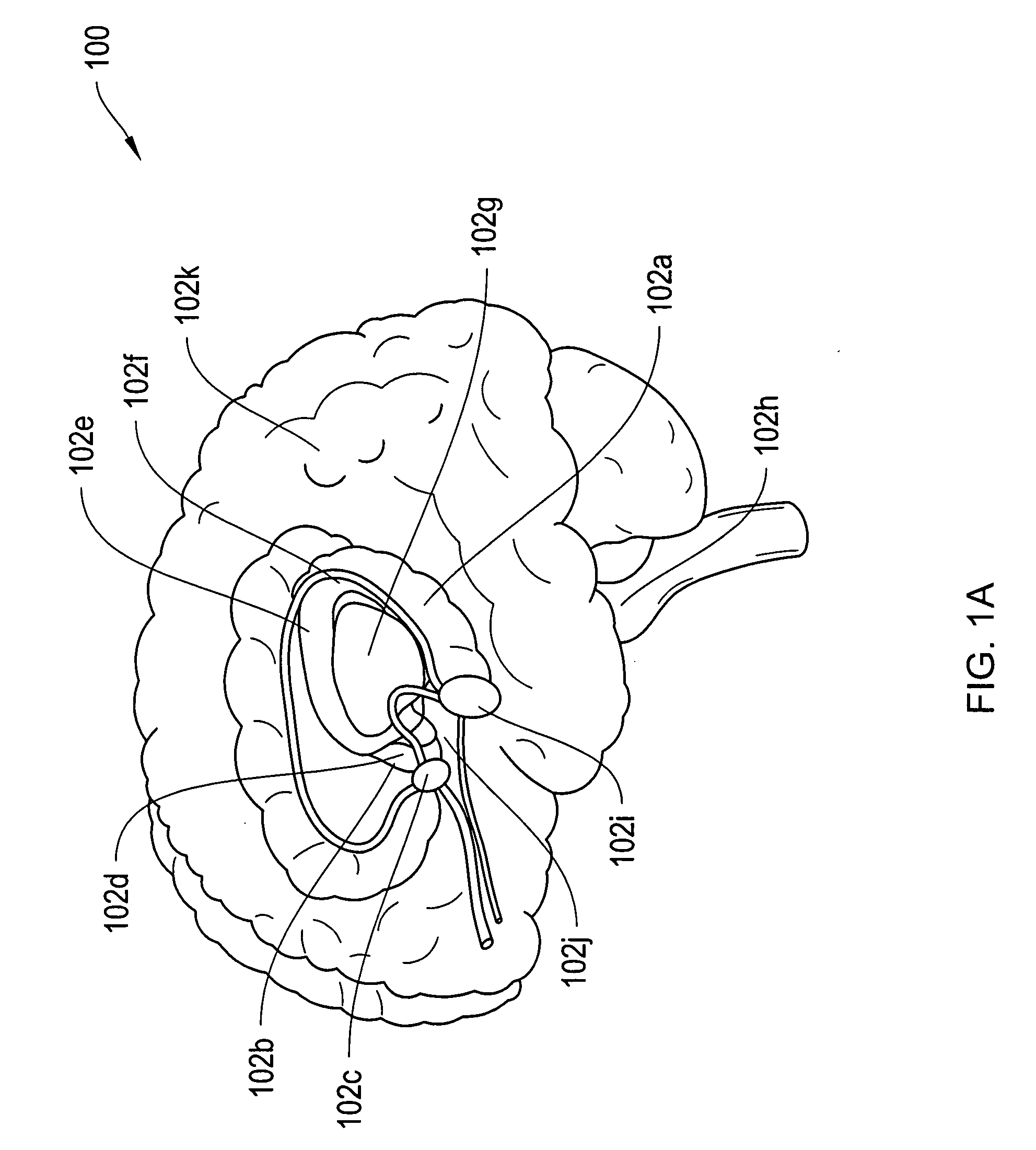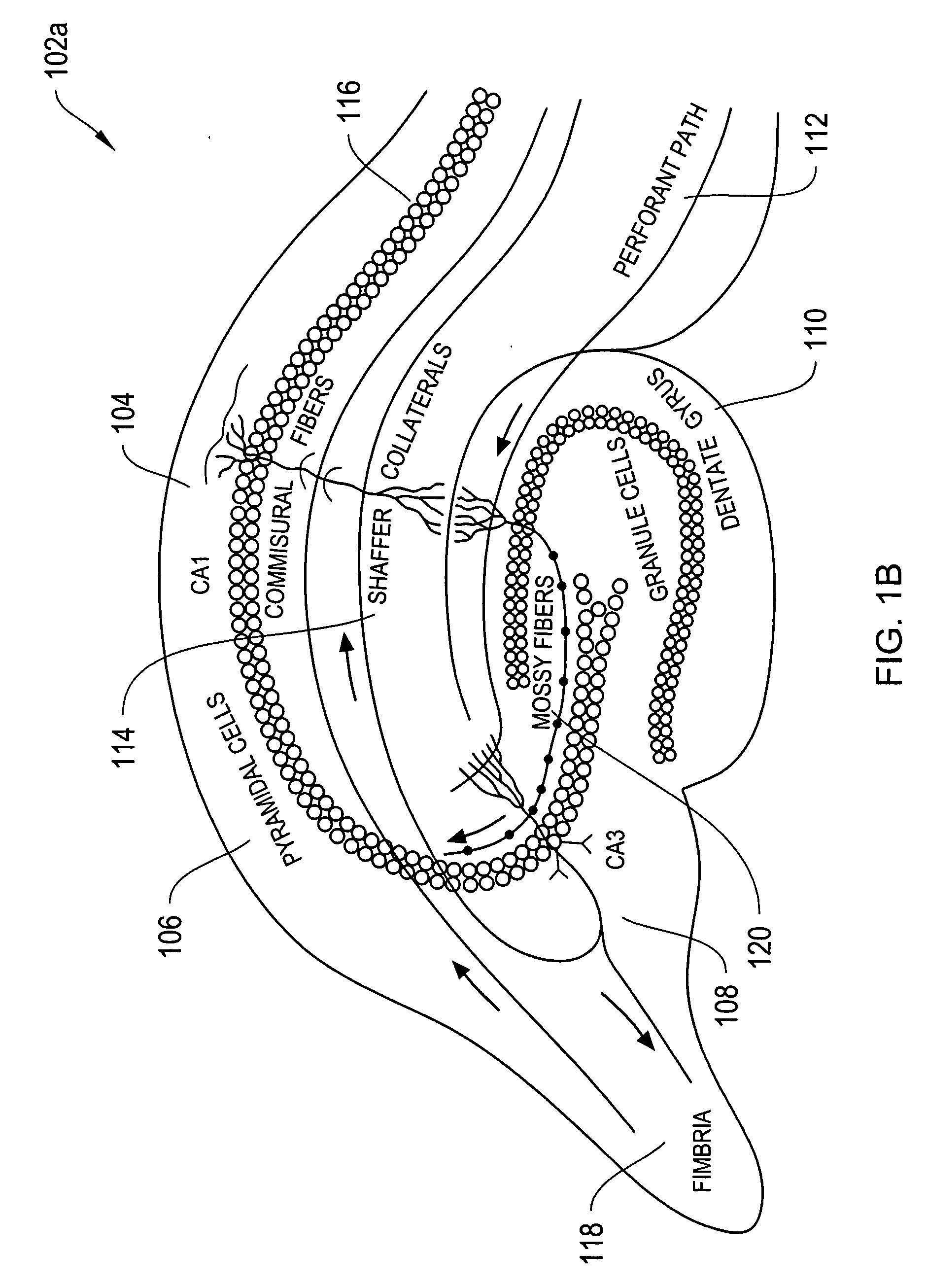Systems and methods for improving a cognitive function
a cognitive function and system technology, applied in the field of cognitive function improvement systems and methods, can solve the problems of no effective treatment for neurodegenerative disorders, affect one or more cognitive functions, and disrupt communication along neural signaling pathways, so as to improve cognitive functions and improve cognitive functions
- Summary
- Abstract
- Description
- Claims
- Application Information
AI Technical Summary
Benefits of technology
Problems solved by technology
Method used
Image
Examples
Embodiment Construction
[0049] As will be seen from the following description, in some aspects, the invention relates to systems and methods for providing cognitive therapy through stimulation of activating and inhibiting neurons in the brain, thereby modulating neural firing rhythms.
[0050] The present invention may be embodied in various forms to analyze and treat disorders in cognitive function. Cognitive function includes attention, executive function, reaction time, learning information processing, conceptualization, problem solving, verbal fluency and memory (e.g., memory consolidation, short term memory, working memory, long term memory, declarative memory or procedural memory). Impairment in a cognitive function treated by the methods described herein can be an impairment in attention, which is the capacity or process of selecting out of the totality of available sensory or affective stimuli, those stimuli that are most appropriate or desirable for focus at a given time (Kinchla, R. A., et al., Ann...
PUM
 Login to View More
Login to View More Abstract
Description
Claims
Application Information
 Login to View More
Login to View More - R&D
- Intellectual Property
- Life Sciences
- Materials
- Tech Scout
- Unparalleled Data Quality
- Higher Quality Content
- 60% Fewer Hallucinations
Browse by: Latest US Patents, China's latest patents, Technical Efficacy Thesaurus, Application Domain, Technology Topic, Popular Technical Reports.
© 2025 PatSnap. All rights reserved.Legal|Privacy policy|Modern Slavery Act Transparency Statement|Sitemap|About US| Contact US: help@patsnap.com



